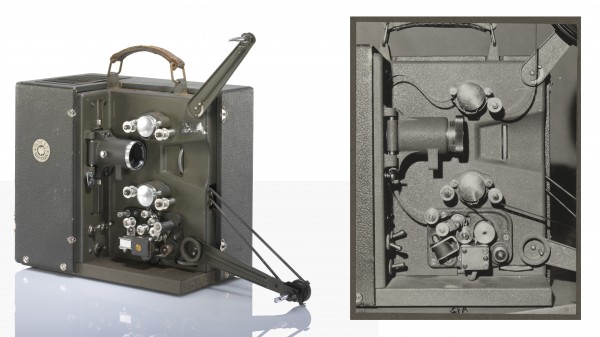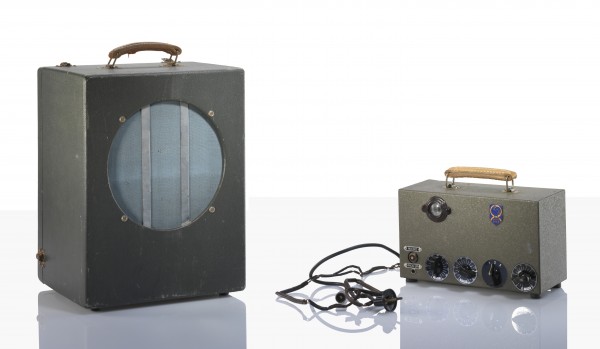A process developed by the Société commerciale et industrielle Pathé to add a soundtrack to amateur films, using a magnetic stripe on 9.5mm film.
Film Explorer

Anonymous 9.5mm amateur Kodachrome film with magnetic sound, c. 1960.
Fonds Jean Bonnet – Collection Fondation Jérôme Seydoux-Pathé, Paris, France.
Identification
8.2mm x 6.15mm (0.323 in x 0.242 in).
The projector aperture was 1.33:1, however a manually adjustable mask allowed the soundtrack area to be obscured or hidden during projection. This adjustment would cause the aspect ratio to become thinner.
1
The following color stocks were available to amateurs on 9.5mm film during the period magnetic stripe was in use: Kodachrome, Ferraniacolor (sometimes branded as Pathéscope-color), Kodachrome II, Ektachrome, Gevachrome, and Fujichrome.
The magnetic stripe measured between 0.8mm and 1.1mm wide. The magnetic coating was applied to the base side and overlapped the printed image slightly (by 0.5–0.6 mm). The sound was offset from the picture by 30 frames.
8.5mm x 6.5mm (0.334 in x 0.256 in).
A central rectangular perforation (2.4mm x 1mm) in between each frame.
Reversal, B/W or color, dependent on the emulsions available from the 1950s onwards.
Edge markings differ across different manufacturers and products. The markings typically appear in the frame line between each frame.
History
With the growth of the magnetic stripe sound system on other film gauges, the Société commerciale et industrielle Pathé took the opportunity to offer its 9.5mm customers the possibility of adding sound directly to their own films. This innovation brought a fuller amateur-filmmaking experience into the hands of individuals: image, color and sound. Although 9.5mm with sound had existed since 1937 for release prints, amateur filmmakers were restricted to shooting films without synchronized sound and projected their films without any integrated sound system. True to 9.5mm’s reputation as a truly amateur film format, Pathé wanted to design sound recording equipment that would be easy to use at home – and, at a reasonable price. To address this double constraint, the ideal solution was to bring together sound and image directly synchronized on the same medium, as with optical sound. Pathé approached the Pyral company, which had registered a patent for a method of coating magnetic stripes on cinematographic film. A contract was signed between the two companies in June 1951. Pathé was then able to exploit this process exclusively. The company soon after designed a special projector which enabled the application of sound to amateur films, a process referred to as “post synchronous sound.
The “Marignan” projector was launched in 1952. Based on the “Joinville” model, it was designed to facilitate the recording of magnetic sound on film. Initially available in silent mode, it could be equipped with a magnetic head allowing for both recording and playback. It came with a special amplifier, the JP7, to which a microphone and/or record player could be connected. Besides its main role in generating the pre-magnetization frequency required for magnetic recording, this amplifier also acted as a mixing console for the two sound inputs. Magnetic sound technology had the advantage of being able to capture fully audible information at a speed of 16 fps – the frame rate normally used for shooting 9.5mm films.
At Pathé, the magnetic sound-on-film process was also extended to 16mm film. Simultaneously, the arrival of portable tape recorders allowed synchronous recording of sound and image on separate film and quarter-inch audio tape. However, applying sound after filming and processing was still the most cost-effective, and easiest, method for 9.5mm filmmakers. Following on from the “Marignan” projectors, more sophisticated devices came to market that made it possible to keep using this technique, in this format. The system was still in use as late as 2020.
Technology
No 9.5mm film cameras were made that could record synchronous sound at the time of filming. Instead, 9.5mm film with magnetic stripe relied on the post-synchronization of sound with image during projection. Films were shot without sound. After processing and editing, the amateur had a Pathé-approved store apply a magnetic stripe to the lateral edge of the film strip on the film base side. Sound was then recorded on this stripe while the film was projected. For this purpose, the devices were equipped with induction motors, which guaranteed absolute regularity in the running of the film, which was essential for even sound quality.
To obtain a good recording, it was important to isolate the projector from the microphone, so that it wouldn't pick up the motor noise. The technique may seem simple, yet it required a specific set-up and some experience. In France, auditoriums with good acoustic conditions could be rented by amateur cine clubs. It was also possible to erase the sound using an erasing magnet, and then start a new recording.

Left: The Pathé Marignan projector.
Right: Detail of the Pathé Marignan projector equipped with magnetic stripe sound recorder and playback head.
Fonds Robert Guénet. © Fondation Jérôme Seydoux-Pathé, Paris, France. Photograph by François Ayme. / Fonds Michel Lechevalier. © Fondation Jérôme Seydoux-Pathé, Paris, France.

Fonds Robert Guénet. Photograph by François Ayme. © Fondation Jérôme Seydoux-Pathé, Paris, France.
References
Anon. (1952). “Le son magnétique Pathé”. Pathé Ciné Revue, 1 (July): pp. 12–13.
Jouennen, Maurice (1953). “Comment réussir vos enregistrements ‘son magnétique’”. Pathé Ciné Revue, 7 (December): pp. 13–15.
Patents
Société Pyral (inventeur Albert-Barbier Saint-Hilaire). Procédé et dispositif pour le dépôt de piste magnétique sonore sur film de cinéma. FR1039974, filed July 19, 1951, and issued October 12, 1953. https://data.inpi.fr/brevets/FR1039974?q=1039974#FR1039974
Société Nouvelle Pathé-Cinéma. Procédé et appareil pour la sonorisation de films cinématographiques étroits et films sonorisés en résultant. FR1069039, filed October 20,1952, and issued July 2, 1954. https://data.inpi.fr/brevets/FR1069039?q=1069039#FR1069039
Compare
Related entries
Author
After studying history, Anne Gourdet-Marès worked as a projectionist and camera assistant. With a passion for the history of cinematographic techniques, she is in charge of the cinematographic equipment collection at the Jérôme Seydoux-Pathé Foundation. Her research on the history of cameras, and their support, has been the subject of several papers and publications. As a court-appointed expert in her field, she is often consulted on technical issues. She also creates magic lantern shows and educational workshops exploring the technical inventions of cinema. In 2018, she published Si on allait au cinéma! for young audiences, published by À dos d'âne. To mark the centenary of Pathé-Baby, she curated the exhibition “Pathé-Baby: le cinéma chez soi”, held at the Fondation Jérôme Seydoux-Pathé in 2022.
Gourdet-Marès, Anne (2024). “9.5mm reversal film with magnetic stripe”. In James Layton (ed.), Film Atlas. www.filmatlas.com. Brussels: International Federation of Film Archives / Rochester, NY: George Eastman Museum.
Margaux Chalançon


